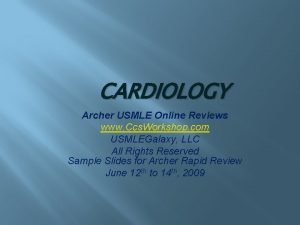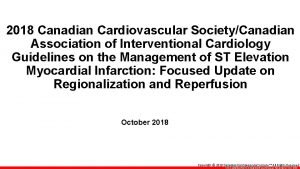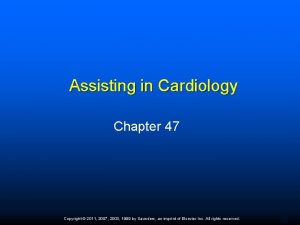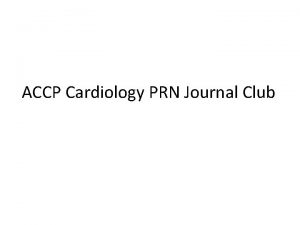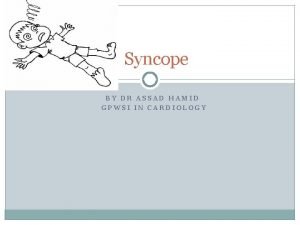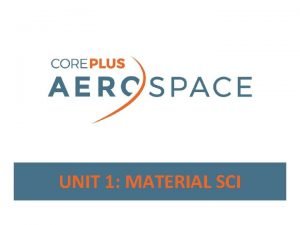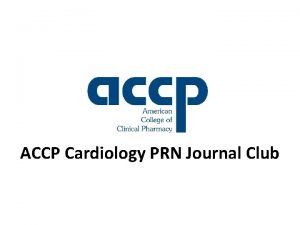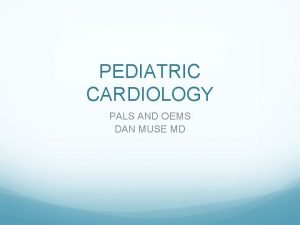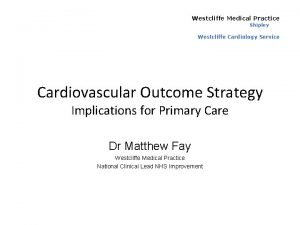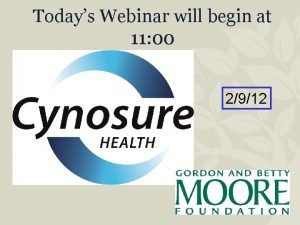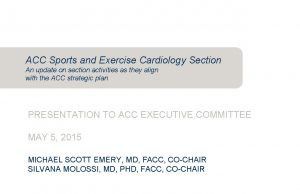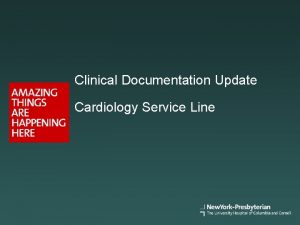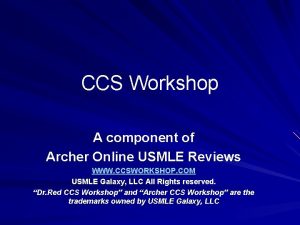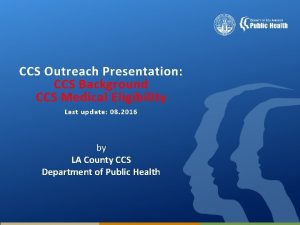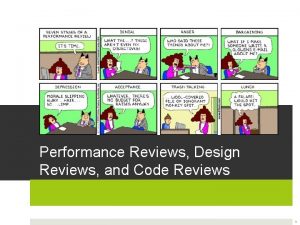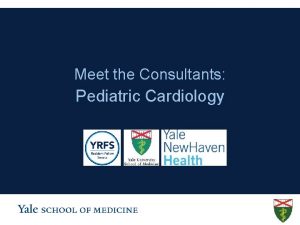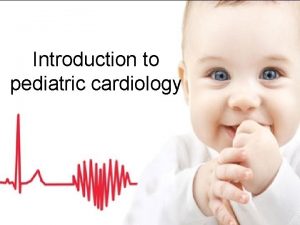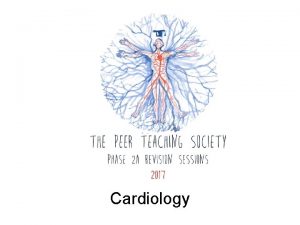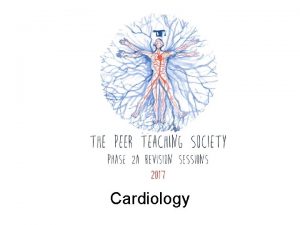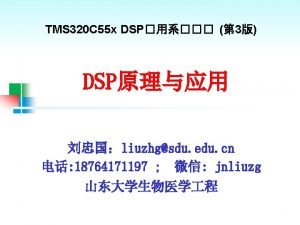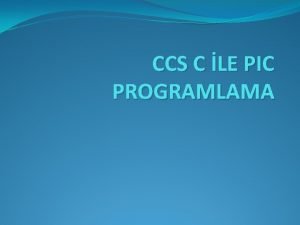CARDIOLOGY Archer USMLE Online Reviews www Ccs Workshop













- Slides: 13

CARDIOLOGY Archer USMLE Online Reviews www. Ccs. Workshop. com USMLEGalaxy, LLC All Rights Reserved Sample Slides for Archer Rapid Review June 12 th to 14 th, 2009

Stress Test � � Stress test involves stressing the heart + evaluating cardiac response to stress. Indications : Diagnose CAD ( patients with risk factors and symptoms of chestpain. Assess pre-test probability) In a person with known CAD, for assessing the functional capacity i. e; safety of work/ recreation ( Sub-maximal stress test) � Contraindications : � STEMI less than 4 days Acute aortic dissection Myocarditis, Pericarditis Third degree heartblock Poorly controlled Heart failure Severe AS with valve area < 1 cm 2 For patients presenting with chestpain and CAD risk factors, rule out Acute MI first with serial cardiac enzymes before sending for Stress test

Stress Test Components Evaluating Response to Stress Types of Stress - Tachycardic -Vasodilator - Inotropic - Clinical features - EKG changes - Nuclear component/ Myocardial perfusion study - Echocardiogram ( wall motion abnormalities)

Stress Test � Exercise Stress Test Tachycardic type of stress – Increase the heart rate by making the patient walk on a treadmill ( Target Heart Rate = 220 -age) and evaluate response to stress. Evlauating Cardiac response �Clinical features – observe for chestpain, sob during stress �EKG changes ( observe for ST depressions > 2 mm during stress, ventricular arrhythmias) �Specificity of this assessment is lowered ( more false positives) if there are resting ST-T changes already eg: LVH, LBBB, WPW, Digoxin use) �Adding Myocardial perfusion study ( Nuclear component) Thallium or Sestamibi ( Technitium) �Evaluate for the tracer uptake – A fixed defect suggests infarcted t or hybernating myocardium. Reversible defect ( tracer uptake on stress and resolves with rest) suggests ischemia �Echocardiogram ( Exercise Stress Echo) – observe wall motion abnormalities, assesses viability ( viable if myocardial wall is akinetic at rest and improved with stress)

Stress Test - Options for Stress Exercise Stress Test (treadmill) �most preferred test in anyone who can exercise well as it allows to assess exercise capacity and symptoms also apart from evaluating ST segment response. �most sensitive if patients can reach 85% of Target Heart Rate (220 -age) �EKG component alone is sufficient if there is a Low probability of CAD. EKG component specificity is lower for patients with resting EKG changes ( LBBB, early repolarizations, LVH, WPW, pacemaker rhythms) �Combining nuclear component increases sensitivity and specificity. Nuclear imaging is preferred when patient has intermediate probability of CAD. �In LBBB, LVH, WPW , Paced LV rhythms, using a tachycardic stress may produce reversible defects on myocardial perfusion study in the septal area even in absence of CAD ( False Positives) so, the solution here is to use vasodilator stress ( Stress them with out increasing the heart rate).

Stress Test - Options for Stress Vasodilator Stress: Dipyrimadole (Persantine) or Adenosine Stress test � � � Mechanism here is by coronary vasodilation and coronary steal phenomenon ( Diseased coronary arteries cannot dilate in response to adenosine where as healthy arteries dilate well. This leads to more coronary blood flow in healthy arteries as opposed to diseased arteries. Hence, induces ischemia which can show up as reversible defect on the Nuclear imaging) Preferred Choice in patients who cannot exercise ( osteoarthritis, joint problems, obesity, previous CVA, Peripheral arterial disease) patients with LBBB, those already on b-blockers ( prevents achieving target heart rate in tachycardic stress), paced rhythm, freq PVCs, poorly controlled hypertension and moderate Aortic Stenosis Contraindications: moderate to severe Asthma or COPD ( these agents cause bronchospasm) high grade heart blocks ( second or third degree patients already on dipyridamole ( Aggrenox) patients with recent caffeine ingestion i. e; in last 12 to 24 hours ( caffeine blocks adenosine receptors and decreases vasodilatory properties of adenosine) Adverse Effects : Chestpain, Severe headache, Hypotension – Reverse with Aminophylline In patients who can not walk and who also have contraindications to Vasodilator stress, use Inotropic stress ( Dobutamine Stress Echo)

Stress Test - Options for Stress Positive Inotropic Stress: Dobutamine Stress Echo � � Mechanism : Dobutamine increases Heart rate as well as contractility of myocardium and produces ischemia. Echo is then used to evaluate wall motion abnormailities during dobutamine infusion. An ischemic myocardial wall is hypokinetic. Also, useful to evaluate VIABILITY ( when in doubt regarding myocardial stunning vs. Scar) A scar is Akinetic and does not improve with stress. A stunned myocardium (viable) may be initially akinetic but improves with stress. Preferred Choice in � Patients who can not walk and who also have contra indications for Dipyridamole Stress ( Moderate to severe COPD or asthma, High grade heartblocks) � Post Ischemia patients or Ischemic Mitral regurgitation ( To assess viability) Not good for � patients with LBBB, on beta blockers, paced rhythm, freq PVCs or atrial arrhythmias, or poorly controlled hypertension Prior to Dobutamine stress test, hold AM dose of b-blocker

Board Style Question 1 � � � � A 52 y/o man with presents to your office with complaints of exertional chest pain for the past 4 weeks. The chest pain is usually left sided, occurs on walking about three blocks and goes away with rest. He has developed a habit of taking rest when the chest pain comes and he did not think it needed medical attention until his friend told him yesterday that it might be a symptom of heart disease. He is concerned and requests your recommendation. He denies any chest pain or shortness of breath now. He also reports no change in quality or intensity of his chest pain. His past medical history is significant for Hypertension and Smoking. His medications include lisinopril and hydrochlorthiazide. Physical examination is benign. The next best step in establishing the diagnosis in this patient is : Electrocardiogram 2 D -Echocadiogram Exercise – EKG Stress Test Dobutamine Stress Echocardiogram Persantin Stress Test Cardiac Catheterization

Ans. C � � Exercise EKG Stress test is the preferred test in evaluating patients who can walk and are presenting with symptoms typical of CAD. The patient gives a history of typical exertional chest pain that improves with rest. This highly suggestive of stable angina. The patient has no chest pain now. A resting ECG is useful to show if there any baseline changes but it will not establish the diagnosis. An ECG should be obtained during stress to establish the diagnosis of ischemic heart disease In patients who can walk, Exercise stress is the preferred modality since one can also assess the symptoms, ekg changes and functional capacity. In patients who cannot walk, persantin (dipyridamole) stress is preferred Dobutamine echocardiogram is reserved for patients who can not walk and have contraindications to dypridamole stress test.

Board Style Question 2 � A 65 y/o man with presents to your office with complaints of exertional chest pain for the past 4 weeks. The chest pain is usually left sided, occurs on walking about three blocks and goes away with rest. He has developed a habit of taking rest when the chest pain comes and he did not think it needed medical attention until his friend told him yesterday that it might be a symptom of heart disease. He is concerned and requests your recommendation. He denies any chest pain now. He also reports no change in quality or intensity of his chest pain. His past medical history is significant for pacemaker insertion for a symptomatic second degree heart block, Hypertension, and Smoking. His medications include lisinopril, atenolol and hydrochlorthiazide. Physical examination is benign. An EKG is obtained which reveals pacemaker rhythm with secondary ST-T changes. The next best step in establishing the diagnosis in this patient is : � 2 D -Echocadiogram Exercise Stress Test ( Treadmill Stress Test) Dobutamine Stress Echocardiogram Persantin Stress Test Cardiac Catheterization � �

Ans. d � � Persantin is the preferred option for stress when Exercise Stress Test is not useful or can not be done. Patients with pacemaker rhythms, LBBB and severe LVH, will have baseline EKG changes that may make EKG component of the Stress test difficult. However, in these conditions, Tachycardic stress ( Exercise Stress test) may also produce false positive defects on nuclear imaging. So, the solution is to use a different type of stress such as vasodilator stress ( Persantin). Moreover, this patient was also on beta blocker which makes it difficult to achieve target heart rate during the Exercise Stress. Dobutamine stress test is reserved for patients with bronchospasm or heartblocks ( in conditions where persantin is contraindicated) If stress test revealed ischemia, cardiac catheterization should be performed.

Board Style Question 3 � � � A 65 y/o man with presents to your office with complaints of exertional chest pain for the past 4 weeks. The chest pain is usually left sided, occurs on walking about one block and goes away with rest. He denies any chest pain now. He also reports no change in quality or intensity of his chest pain He also reports having been diagnosed with peripheral arterial disease about 2 months ago for which he was advised exercise therapy. He does experience leg pain on walking about one block which also improves with rest. His past medical history is significant for moderate COPD, Hypertension and a hernia repair about 3 years ago. His medications include lisinopril, hydrochlorthiazide and tiotropium inhaler. Physical examination is benign. The next best step in establishing the diagnosis in this patient is : 2 D -Echocadiogram Exercise Stress Test ( Treadmill Stress Test) Dobutamine Stress Echocardiogram Persantin Stress Test Cardiac Catheterization

Ans. c � � This patient presents with symptoms suggestive of ischemic heart disease. So, needs a stress test to establish diagnosis. He cannot walk to his maximum secondary to peripheral arterial disease and this will limit the exercise. So, exercise stress test can not be done. He has moderate COPD. Using persantin in patients with COPD/ asthma can exacerbate bronchospasm. The preferred choice in this patient is, therefore, Dobutamine Stress Echo.
 Ccs medical reviews
Ccs medical reviews Craig ainsworth cardiology
Craig ainsworth cardiology Cardiology procedures chapter 47
Cardiology procedures chapter 47 Accp cardiology prn journal club
Accp cardiology prn journal club Structured reporting cardiology
Structured reporting cardiology Dr nick gall cardiologist
Dr nick gall cardiologist Hall-garcia cardiology associates
Hall-garcia cardiology associates Accp cardiology prn
Accp cardiology prn Muse cardiology
Muse cardiology Westcliffe cardiology service
Westcliffe cardiology service Enloe cardiology
Enloe cardiology Acc sports cardiology
Acc sports cardiology Elias hanna md
Elias hanna md Clinical documentation improvement for cardiology
Clinical documentation improvement for cardiology
